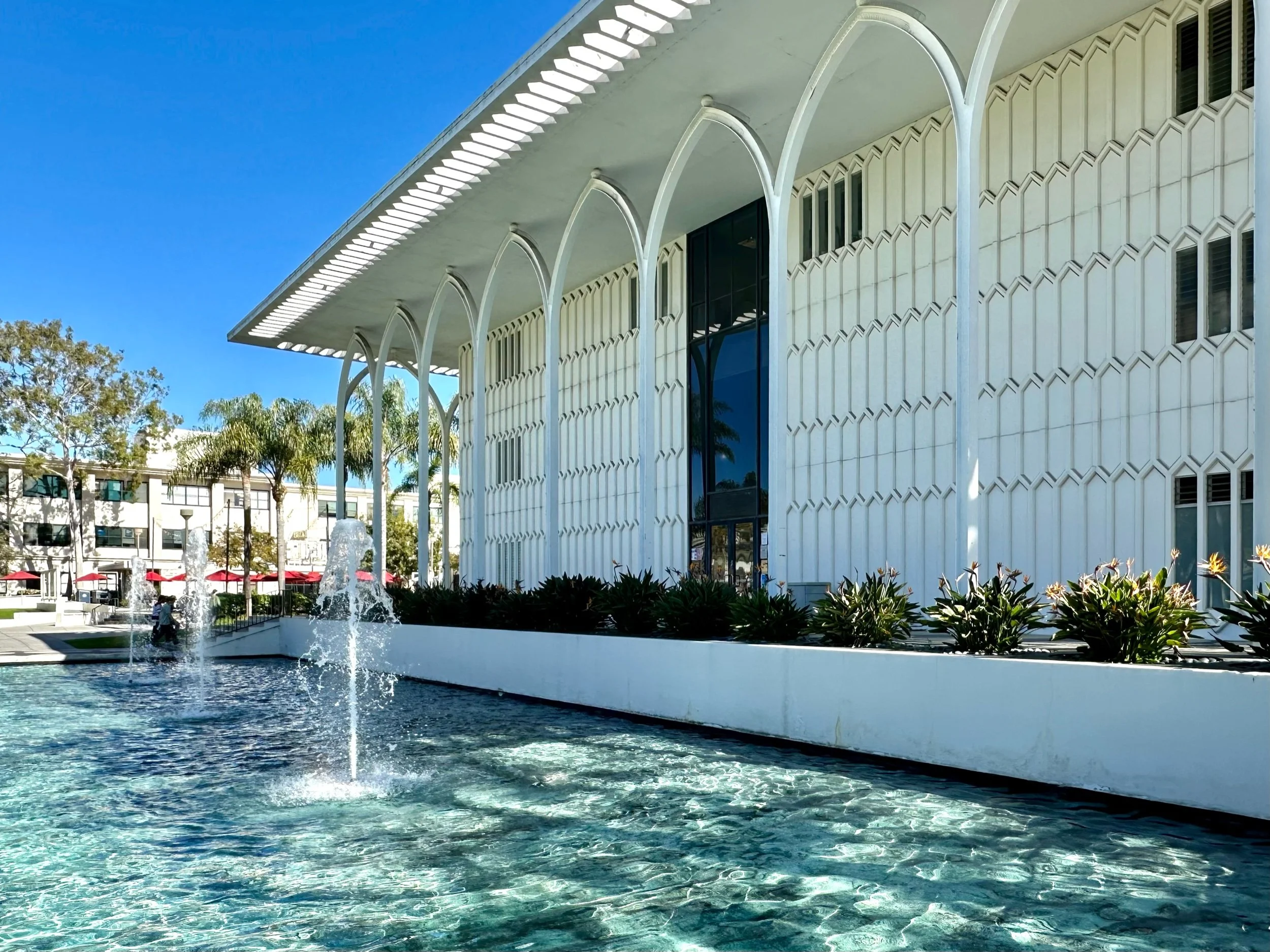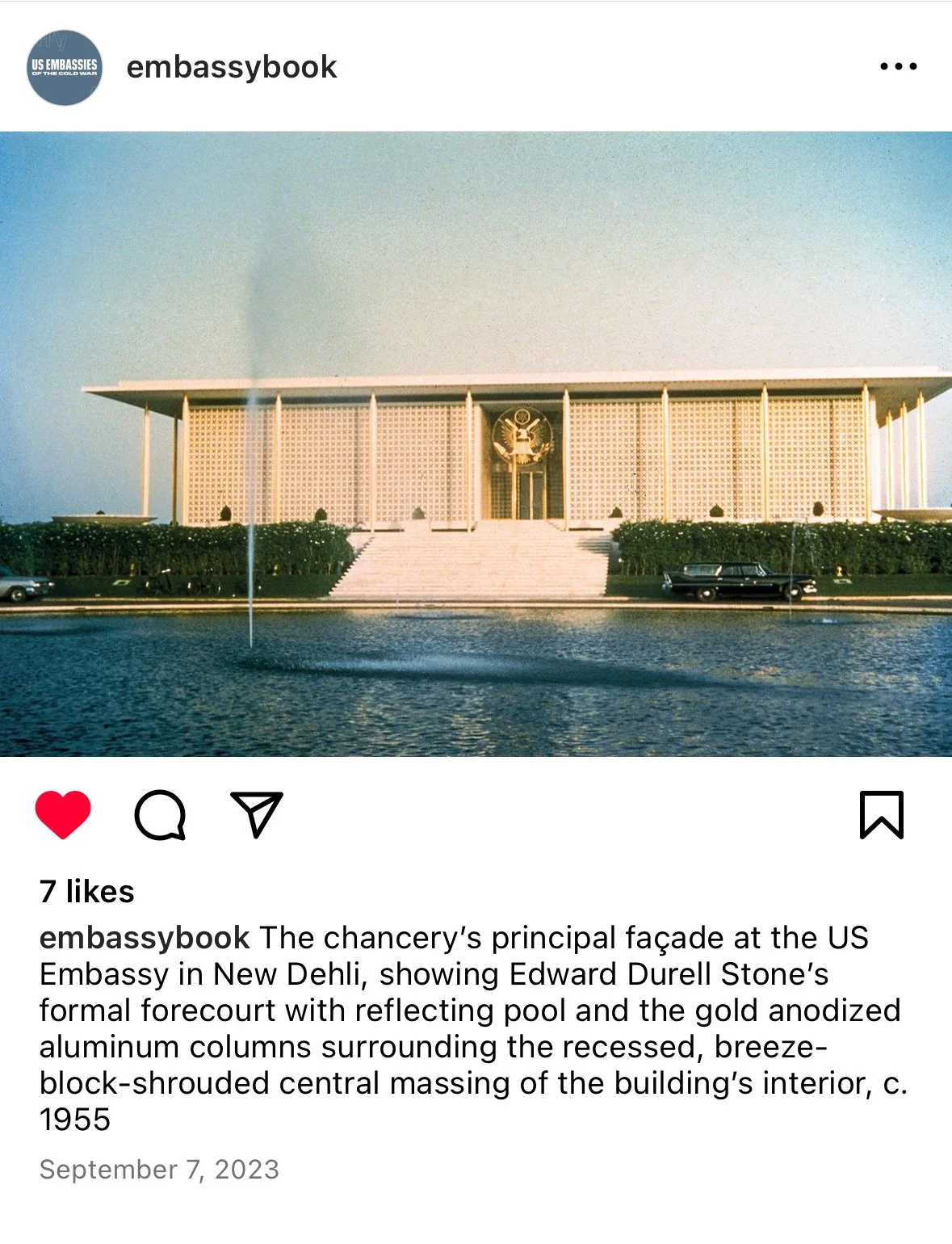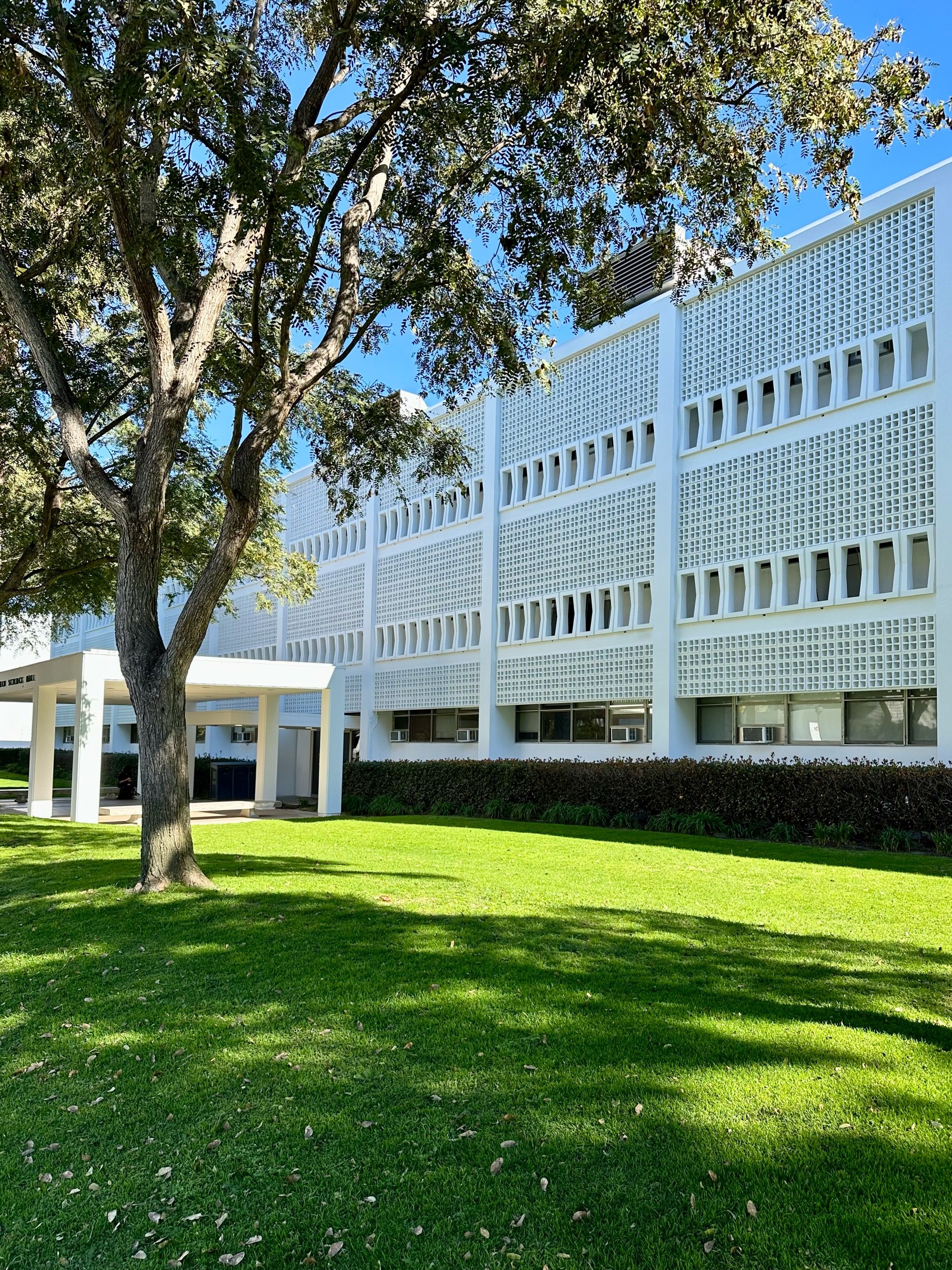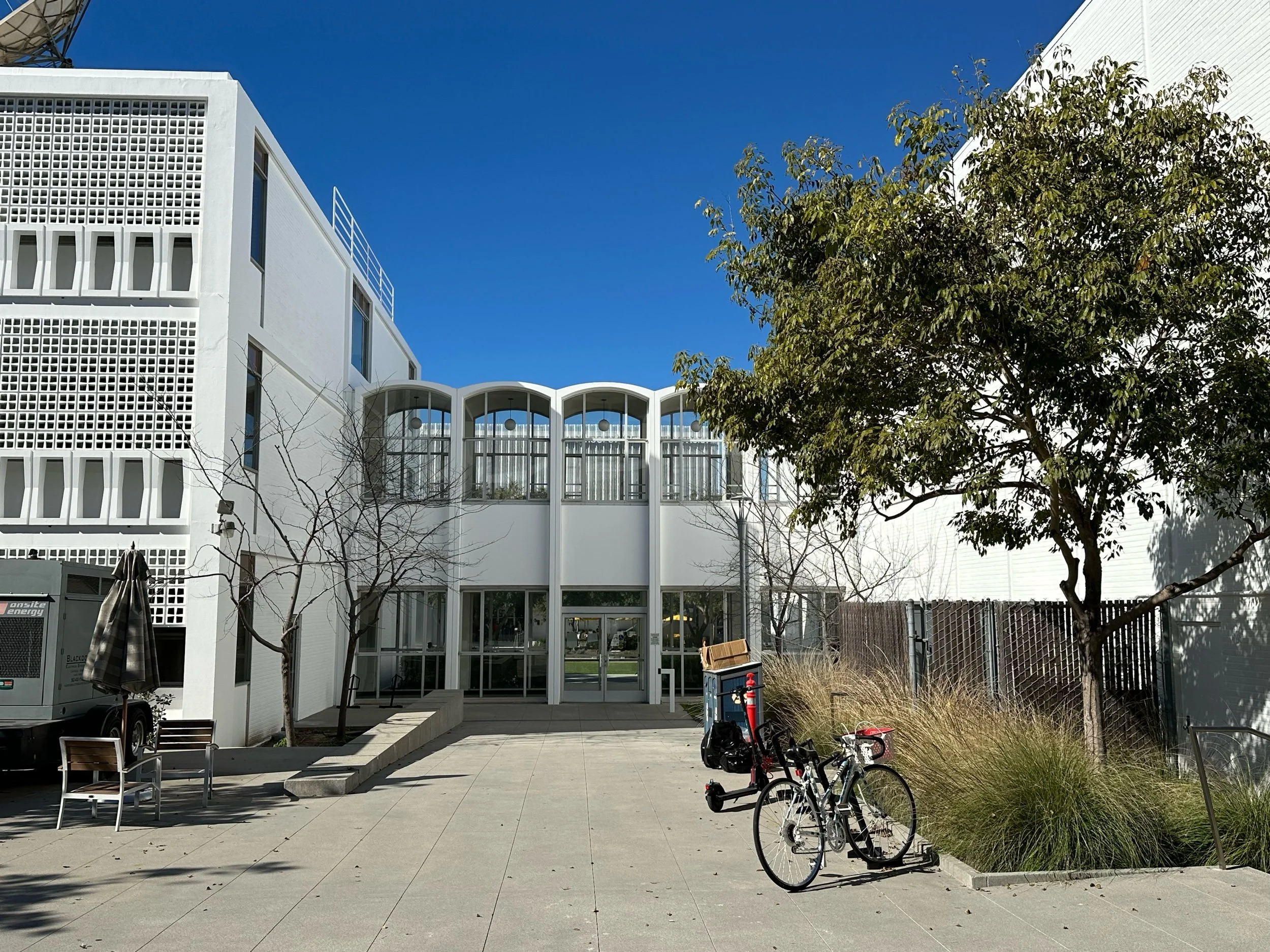Architecture Field Trip - Loyola Marymount Campus
This week I had an airport drop off for family members leaving from LAX. As I would be in the airport area mid-morning, I decided to head to the Loyola Marymount University Westchester campus nearby for a quick “archi-tour”. It was a two-for-one as the main building I wanted to visit was designed by Edward Durrell Stone and inside there would be artwork designed by Millard Sheets.
Edward T. Foley Center, Architect: Edward Durrell Stone, 1964

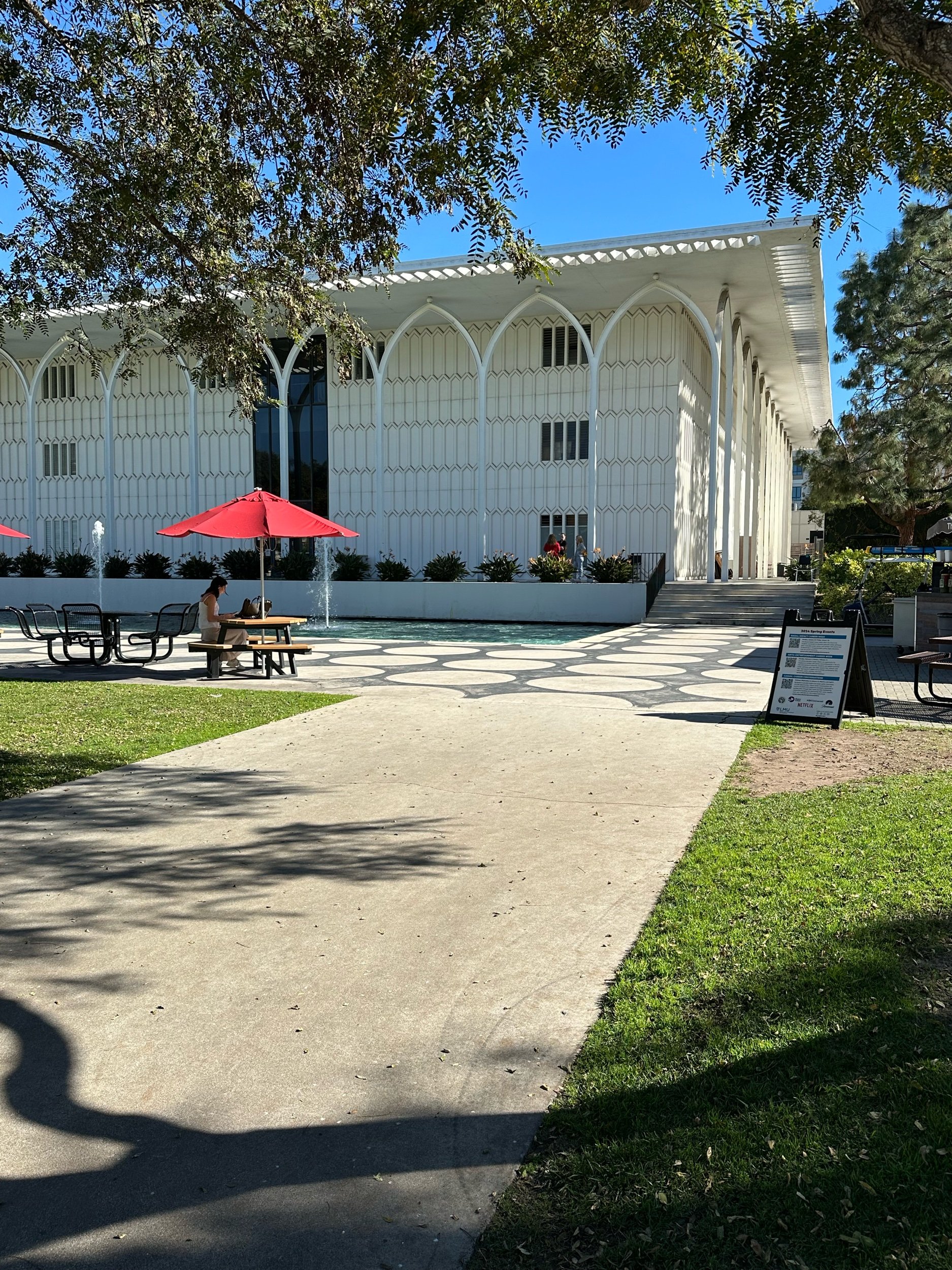
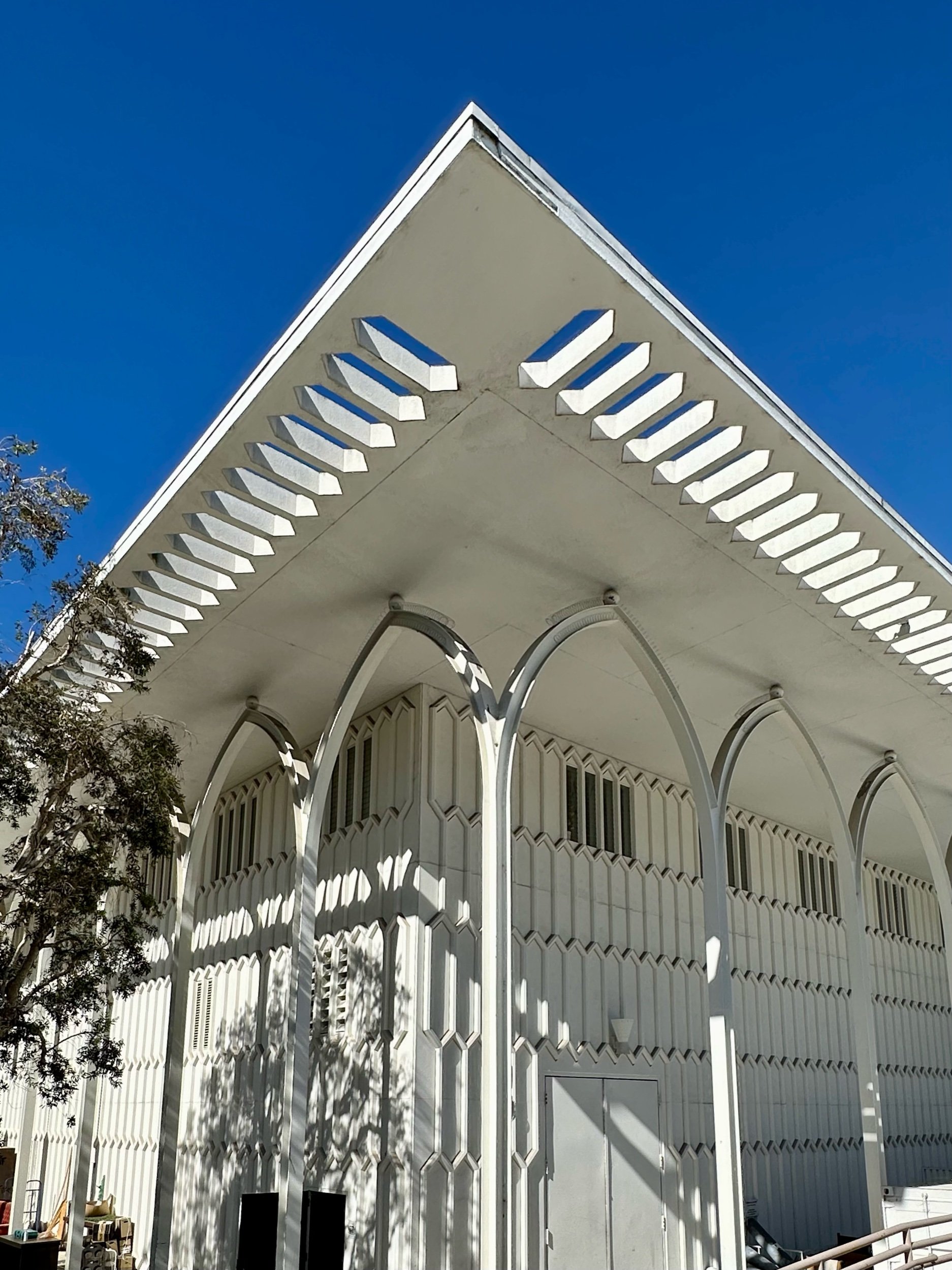
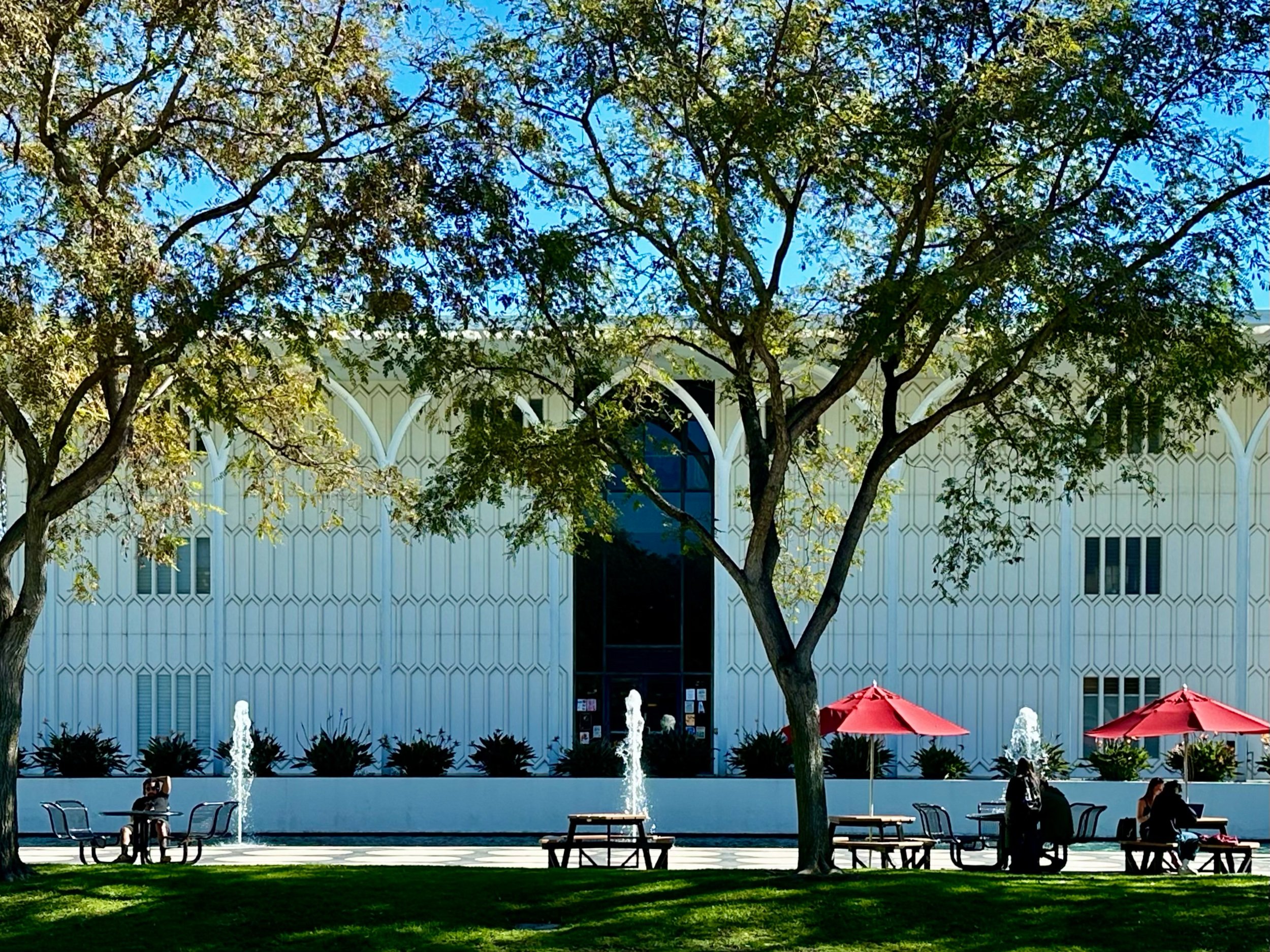
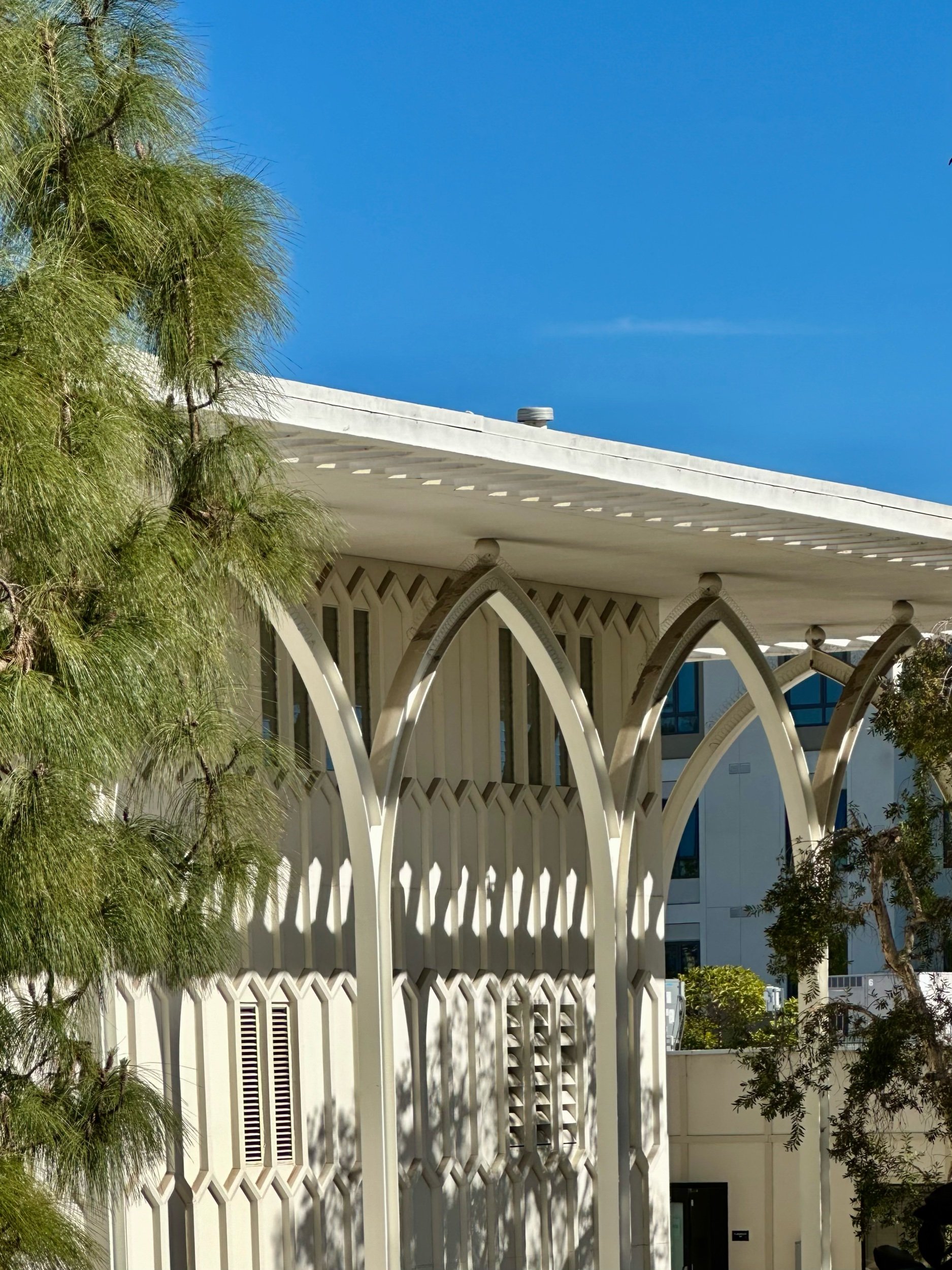
The Los Angeles Conservancy website describes the theater as “a monumental rectangular building set on a podium behind a large reflecting pool. It is a pavilion-style structure much like a scaled-down version of Stone’s famous design for the U.S. Embassy in New Delhi, with a massive projecting roof supported by tall arches that form a colonnade around the building.
The roof is perforated around the edges, allowing for constant play of light and shadow below, and both the perforations and the roof’s delicate supporting arches are mirrored in a raised grid pattern of elongated hexagons all over the building’s façade. All of it is white, save for the tall, simple dark glass entryway, creating a feel of lightness draped over the symmetry and power of the building’s New Formalist style.”
See below for an image of the embassy in New Delhi.
Loyola Tapestry, Designer: Millard Sheets, 1966
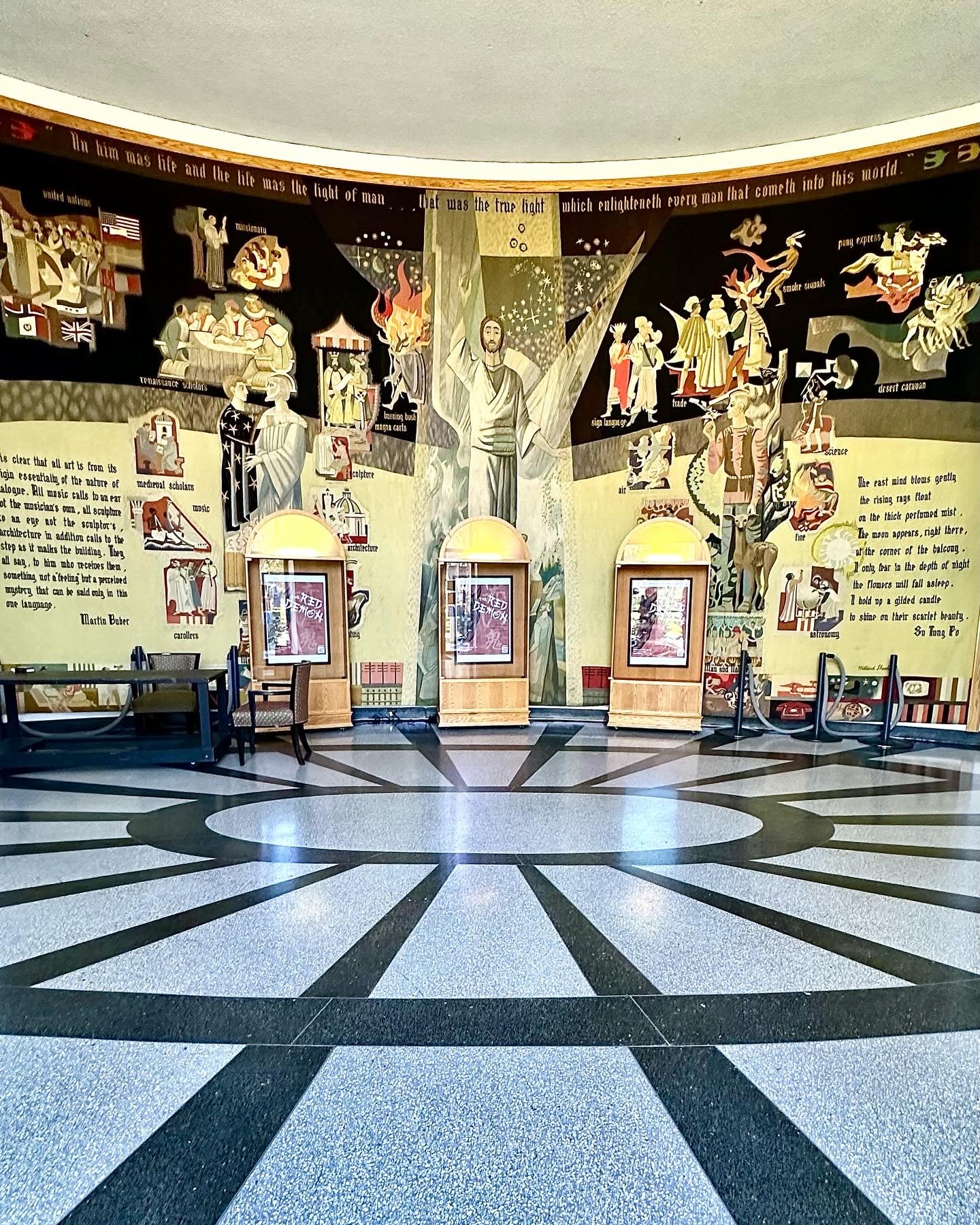


In the foyer of the Edward T. Foley Communications Arts Center, you will find the Loyola Tapestry designed by Millard Sheets. In Sheets words, the tapestry “symbolizes the meaning and means of communication created by man.”
Sheets is well-known for his bank tile mosaic murals. It was a treat to find his artwork, of a different medium, inside the Edward Durrell Stone new formalist building.
For a detailed description of the tapestry, see a post dated Feb. 11, 2011 - “The Breadth of Communication in the Loyola Tapestry” by Adam Arenson.
From the post, I learned “it took seven weavers (working an inch a day) two years and three months to create the tapestry, which is reputed to be the largest modern tapestry in the Americas and the third-largest in the world. Eighteen feet by thirty-four feet, it was hung in March 1966.”
Below, another mid-century gem of a building just a stone’s throw from the Edward T. Foley Center:
Frank R. Seaver Science Center (1962)
I find most campus science buildings interesting in design and the Frank R. Seaver Science Center is very cool with its mid-century breezy details. I only wish I could have seen it before the blocks got painted over in white.


